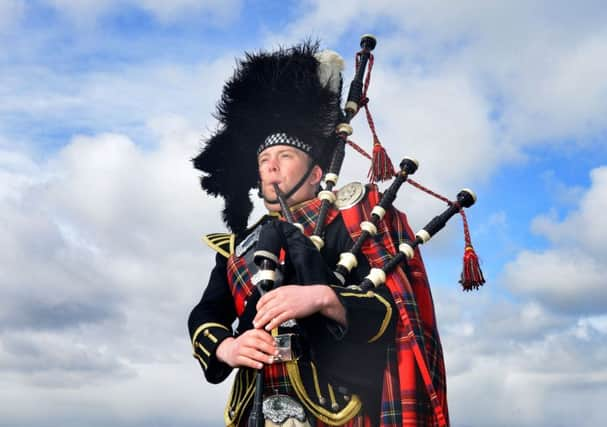Rare bagpipes surface in Australia 200 years on


Detective work by a pipe band major in the “Sunshine Coast” town of Noosa, in Queensland, has helped piece together the background of the ancient instrument, which is almost 200 years old.
The Highland pipes are thought to have been made for the 79th Cameron Highlanders in Edinburgh by one of the first commercial bagpipe manufacturers. They have surfaced in Australia after the widow of a former school pipe band leader decided to donate the pipes to the Noosa District Pipe Band to help mark its 75th anniversary.
Advertisement
Hide AdAdvertisement
Hide AdThe regiment, which has its roots in Fort William, served during both the Crimean War in 1854 and the Indian Mutiny campaign three years later.
Mike MacDonald, pipe major of Noosa Pipe Band, has spent around three years working to authenticate the history of the set of pipes with experts in Scotland, including the Museum of Piping in Glasgow.
The bagpipes, believed to be the oldest in existence in Australia, are currently owned by Marge Sinclair, whose late husband David was bandmaster of the Brisbane Boys’ College band in the 1970s.
Although it is not known exactly how they ended up in Australia, the country’s 61st Battallion, which was raised during the First World War, was renamed the Queensland Cameron Highlanders in 1939, when an official alliance with the Scottish regiment was formed.
Formed by Sir Alan Cameron at the height of the French Revolutionary Wars in 1793, the regiment went on to serve in many battles around the world, including the Anglo Russian Helder Campaign, in 1799, several conflicts in the Peninsula War from 1808 to 1814, Waterloo in 1815, and the two world wars.
It was involved in the battles of Alma and Sevastopol during the Crimean War and moved to India to help with the suppression of the rebellion in 1857, taking part in the capture of Lucknow, and remaining in the country until 1871.
After returning to the UK, the regiment was honoured with the title the Queen’s Own Cameron Highlanders, by Queen Victoria, after taking up ceremonial duties for her.
According to the research by pipe major MacDonald, who has described the instrument owned by Mrs Sinclair as “a work of art,” it was made by the bagpipe maker Donald MacDonald between 1823 and 1826.
Advertisement
Hide AdAdvertisement
Hide AdBorn in Skye, he became one of Scotland’s most prominent early bagpipe manufacturers after moving to Edinburgh, where he ran his business on the Lawnmarket, in the Old Town, from 1800 until he died in 1840.
Pipe major MacDonald said: “The 79th were the only regiment that went from the Crimean Peninsula directly to India to help quell the Indian Mutiny, where they took part in the relief of Lucknow.
“There’s evidence of the time in India’s hot, dry conditions by the whipping on the drones which were bound with hemp to stop the pipes from cracking. The army mainly lived in tents and the pipes would have been subject to tremendous changes in temperature and humidity.”
Mrs Sinclair has agreed to allow Noosa’s pipe band to put the instrument cared for by her husband on display.